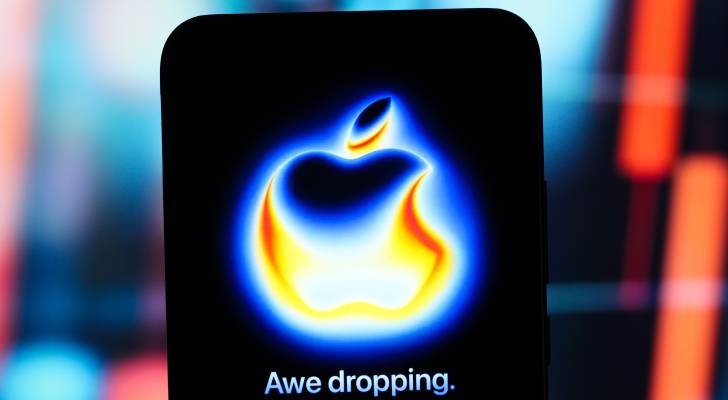 The annual tech upgrade dilemma is back, with Apple's recent announcement of the iPhone 17. For Canadians, this yearly ritual prompts a familiar question: is it time to upgrade, or should you stick with your current device? The iPhone 16 series, launched just last year, can suddenly feel outdated in the face of newer technology.
The annual tech upgrade dilemma is back, with Apple's recent announcement of the iPhone 17. For Canadians, this yearly ritual prompts a familiar question: is it time to upgrade, or should you stick with your current device? The iPhone 16 series, launched just last year, can suddenly feel outdated in the face of newer technology.
This predicament extends beyond smartphones. It affects cars, TVs, kitchen appliances, and various other technologies. Many products are designed with a limited lifespan, while software updates and new features create a sense of inadequacy with older models. This can be frustrating, making consumers feel pressured to spend more for the latest gadgets, even if their current possessions are still functional.
The True Cost of Rapid Tech Upgrades
The allure of the newest technology is strong. But what is the actual financial impact of upgrading your devices so frequently?
Planned Obsolescence: Is Your Device Designed to Fail?
Planned obsolescence, the practice of designing products with a limited lifespan to encourage repeat purchases, isn't just a conspiracy theory; it's a well-documented business strategy.
-
Historical Context: As early as 1924, the Phoebus Cartel, a group of major lightbulb manufacturers, conspired to reduce the lifespan of lightbulbs from 2,500 hours to 1,000 hours. This forced consumers to replace bulbs more often, increasing sales.
-
Modern Examples: This practice continues in the consumer electronics industry. A study found that planned obsolescence costs the average American household an additional US$1,043 (CDN$1,400) annually, solely for technology devices.
-
International Regulations: The European Union has addressed this issue. France passed legislation in 2015, imposing fines up to €300,000 (CDN$490,000) and jail terms of up to two years for manufacturers who intentionally plan the failure of their products.
-
Canadian Initiatives: In Canada, Quebec has also taken action. In October 2023, the province adopted Bill 29, which prohibits the creation or sale of items with planned obsolescence tactics that reduce a product's normal operating life.
The Financial Implications of Upgrading
The cost of upgrading to the latest model can be substantial. The iPhone 17, for example, is expected to start at US$799 (CDN$1,100), with Pro models reaching up to US$1,199 (CDN$1,650). These prices can be even higher in Canada due to exchange rates and taxes. Furthermore, new models can depreciate rapidly. High-end models like the iPhone 16 Pro and Pro Max can lose a significant portion of their value soon after a new launch.
The Psychology of Upgrading
Despite the costs, many consumers feel compelled to upgrade their devices.
-
Motivations: Research indicates that only a small percentage of people upgrade for new features. The primary reasons are the age of the existing phone and its inability to work with current apps or software.
-
The "Outdated" Feeling: The release of a new model can create a feeling that a current device is outdated, even if it still functions perfectly well.
When Should You Consider Upgrading?
Upgrading is generally advisable when your current device no longer meets your needs.
-
Smartphones: For smartphones, this might be when the device stops receiving software updates, the battery no longer holds a charge, or the device is physically damaged beyond repair.
-
Other Products: For other products, consider upgrading when the cost of repairs exceeds the cost of replacement, or when the product no longer functions efficiently.
The Environmental Cost of Frequent Upgrades
The environmental impact of upgrading to the latest smartphones, cars, appliances, or other technology is significant.
-
E-waste Generation: In 2022, the global generation of electronic waste reached a record 62 million tonnes, with projections estimating a rise to 82 million tonnes by 2030. This increase is due to shorter product lifespans, higher consumption rates, and limited repair options.
-
Recycling Rates: A large percentage of e-waste generated is not formally recycled, leading to substantial losses of valuable materials and increased pollution risks.
-
Environmental Contamination: Improper disposal of e-waste can release toxic substances like lead, mercury, and cadmium into the environment, contaminating soil, water, and air.
-
Economic Impact: The global economy incurs billions annually due to the improper disposal and underutilization of electronic devices. The cost of recycling e-waste is also significantly higher than landfilling.
Making Informed Upgrade Decisions
The arrival of the iPhone 17 highlights the constant pressure to acquire the newest technology. While new features can be appealing, it's important to assess whether your current device still meets your needs. If it does, upgrading may offer minimal practical benefits while costing you money and contributing to electronic waste.
By pausing before making a purchase, weighing your actual needs against marketing pressure, and considering the environmental and financial implications, you can make smarter decisions. This approach protects your budget and the planet. Whether it's the iPhone 17, a new car, or the latest appliance, thoughtful timing and intentional upgrades ensure technology supports your life without unnecessary costs or waste. Remember, the newest model isn't always the best investment.


No comments:
Post a Comment